Ever wondered how to reverse-engineer the art that goes into AAA games? Follow along as I describe my process
UPDATE 7/22/2014:
I’ve created a video version of the tutorial! Check it out!!
Borderlands has an interesting art direction style, one that is easy to see and to talk about. I created the guy below in class as a demo of Borderlands style texture creation. (By the way, you can click on the images in this post to see them at full size.)
What a swell guy. If we take a look at his base geometry, though, we see he is pretty low-res. 
And what’s more, he didn’t need a lot of sculpting detail, either. I know from seeing the Polycount art dump of Borderlands that their artists created some fantastic high-res sculpts for their characters. For primary characters like Roland, Jack, or Axton, spending that kind of effort and detail really pays off.
But for other characters, like, say, a bandit who will be gunned down in a few seconds, who won’t be a talking NPC, we can get away with less detail.
For my character, I didn’t find that sculpted detail to be necessary, and I was able to create the most of the detail in the diffuse texture map.
Reference photos & Pants textures
I started with the pants. I had shot texture reference of these leather pants in a studio, and for my first attempt, I projected them on to my base geometry to form a basis for my texture.
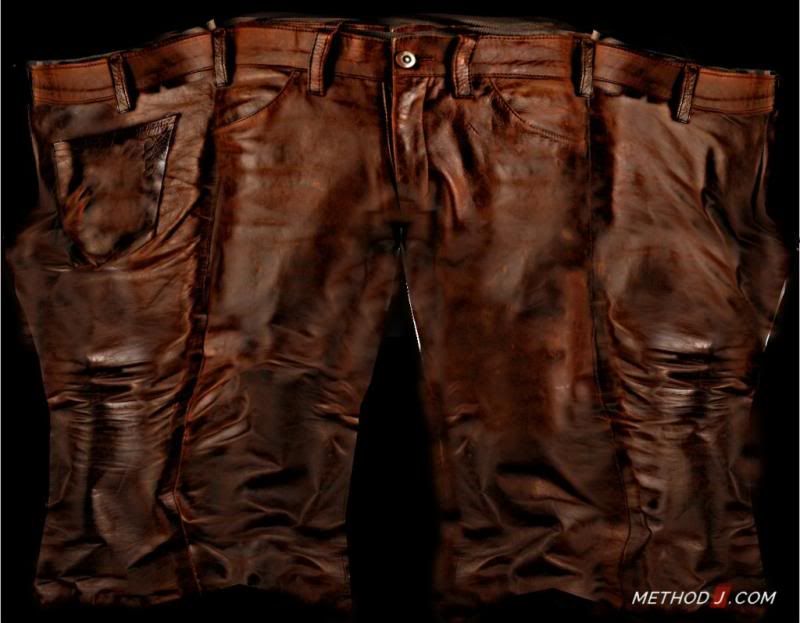
Next, I processed them in Photoshop, looking for a quick solution. Searching the web, it seems like everyone tries to take shortcuts with the BL art style.
The main misconception is that Borderlands is just a simple cel-shaded art style, and that reducing a photo to a few flat colors with some outlines will do the trick.
Naturally I thought the exact same thing at first! I used the Cutout filter and ended up with this.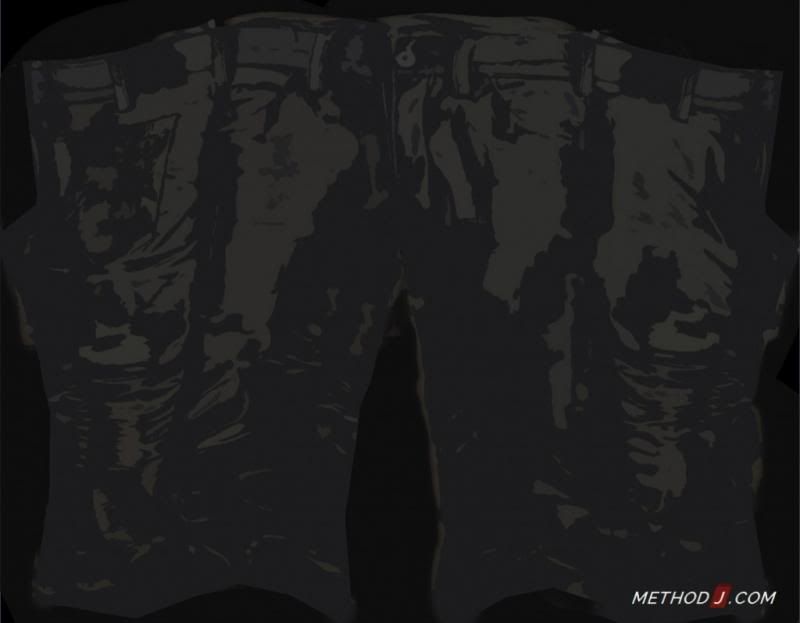
The Cutout filter definitely simplified my photoref texture, but it also produced a pretty noisy texture that didn’t read right.
I tried cleaning it up by hand-painting parts of it to sharpen up the shapes, but also to add a bit more value contrast. Notice that the previous image has only two or three distinct values, whereas my new painted version has a few more brights and darks.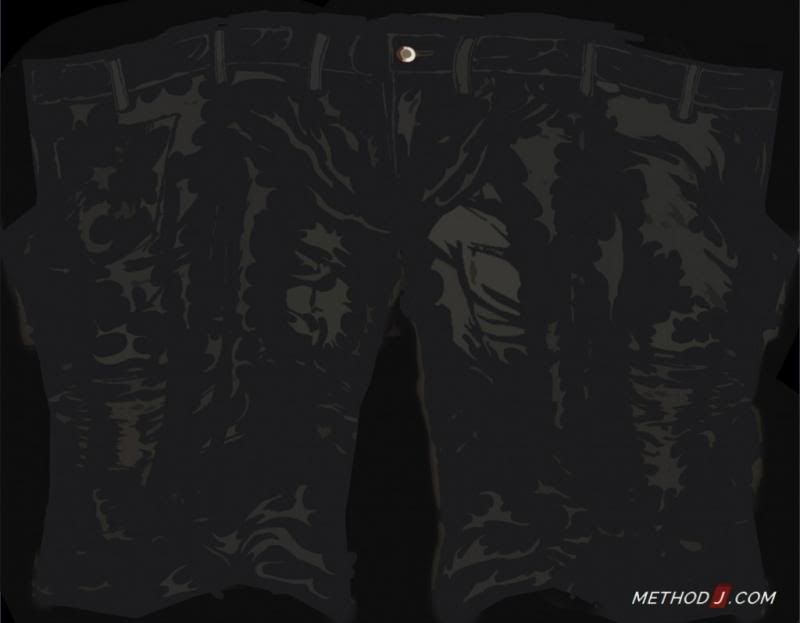
Uh, where am I?
I played around with that style for a while and became sidetracked, eventually painting a texture that looked like this.
Obviously the wrong direction. I found myself stuck on the clothing of the character, so I turned instead to the base anatomy.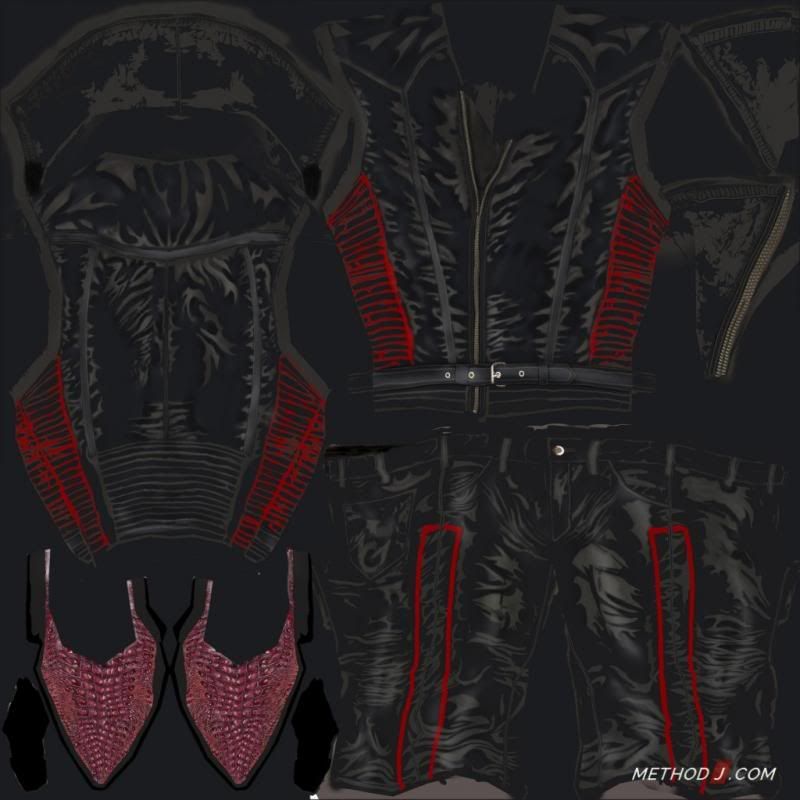
Still, I spent a bit of time on that sidetrack, eventually sculpting the character to match that texture style.
While I may have wasted time, the muscle detail I created for his arm really helped when creating the BL-style textures. So at least there was some benefit to the sidetrack.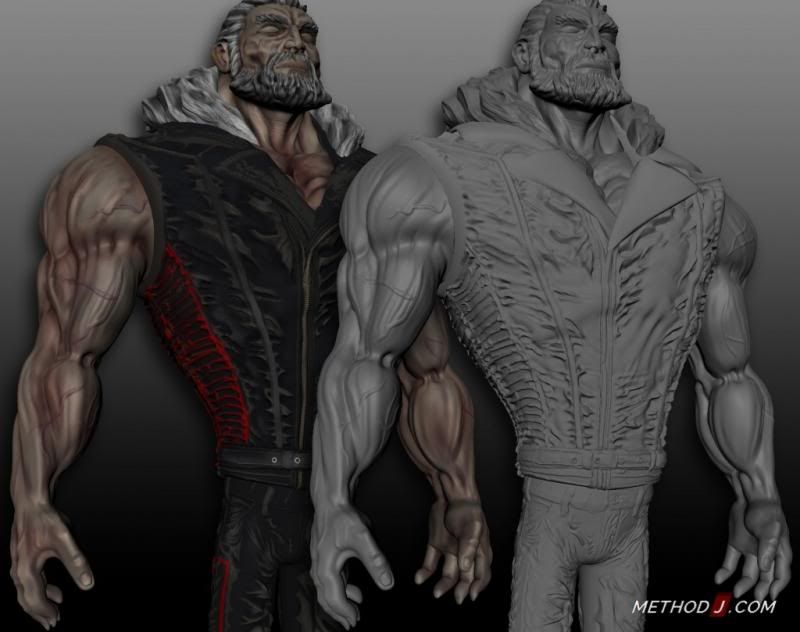
That high res sculpt added crevice detail
I used that sculpt detail and created a crevice map, painting all the low points between muscles with dark, and brightening up high points to show off striations or bones. I ended up with something like this: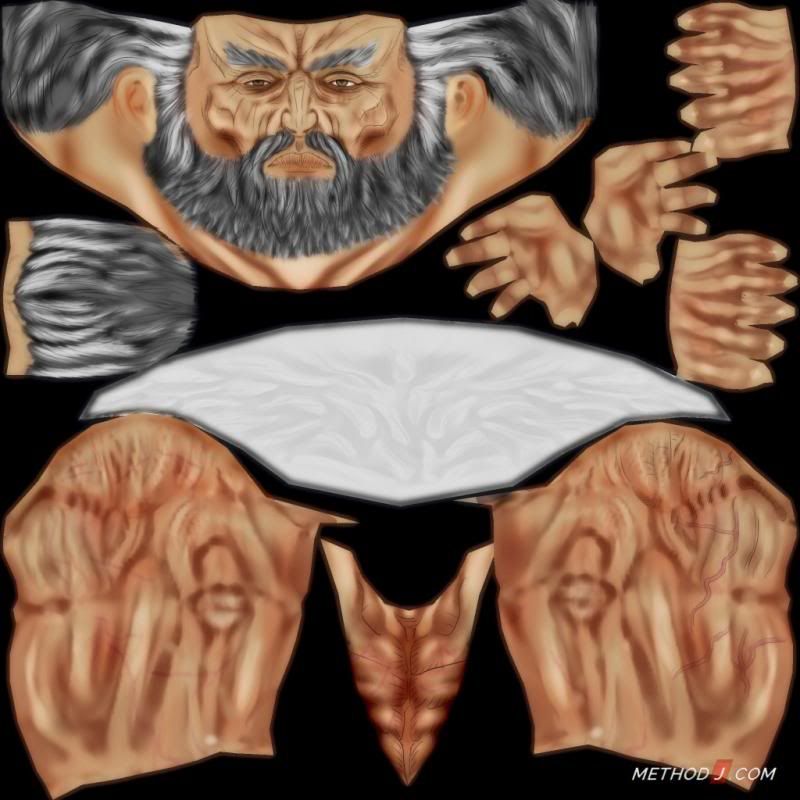
Once I had that, I started experimenting with the distinctive Borderlands outlines.
The sketchy lines on the characters remind me more of comic books than anything, so I started creating a comic-book-style musculature.

He is totally wearing your shoes 🙂
Could you do a tutorial on modeling the character?
Hi Oscar! I will try to post something related to character modeling soon.
Cool!
Cool!Can’t wait
Man, that was really nice, thanks for sharing this process with us.
Glad you liked it, Renan!
Hey I’m trying to make a game and I like the way borderlands textures have that black border I’m trying to make a gravel ground and need an overlay texture like the watercolor splash look like you have up but I need it to texture any ideas on where I could find art online like that that can tile so that the overlay doesn’t make it look like it’s noticeable if that makes sense
Do an image search for watercolors. As for making it tileable, you will probably have to do that yourself, finding a texture like that, that also tiles, is a tall order.
So, if you were going to do this for a whole game, what would be a good workflow if you want to be efficient(and would you leave it to a shader in the game engine to do the cel shading outline?)
I think training artists to work in this style would be the most important (and time consuming part). I don’t think there is a way to ‘automate’ it, so to speak.
And a shared is definitely the way think go! I only did it this way because it is quick and easy.
Wow James your tutorials are amazing!!!
Thanks for sharing <3B